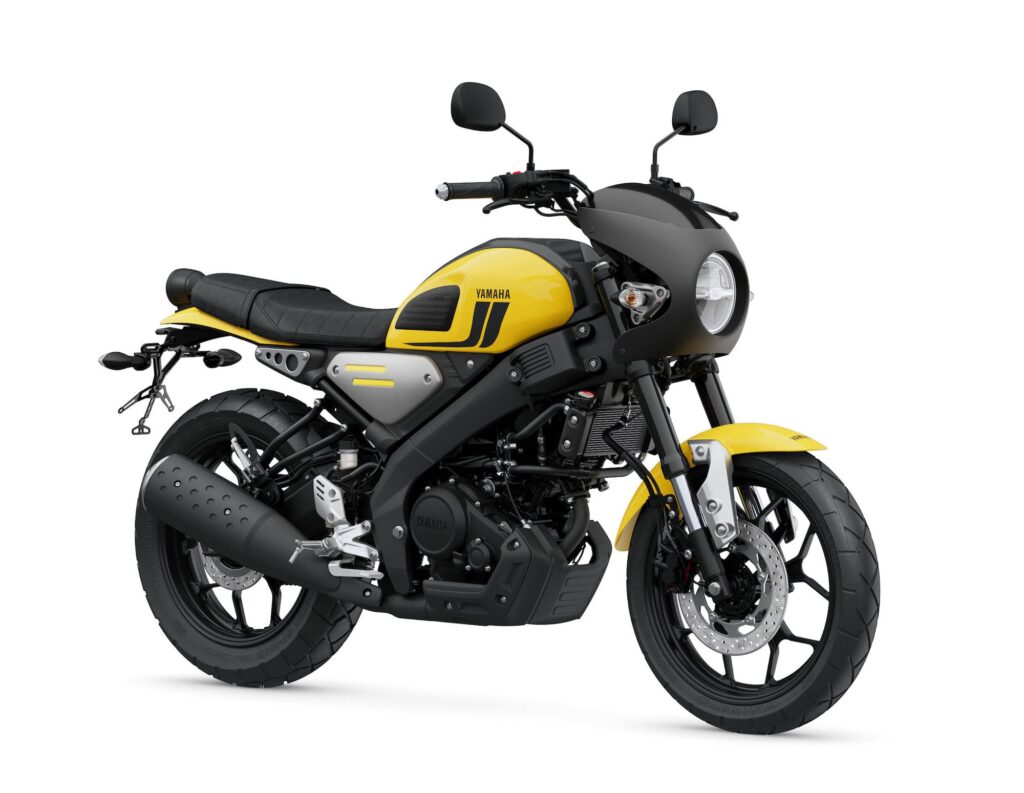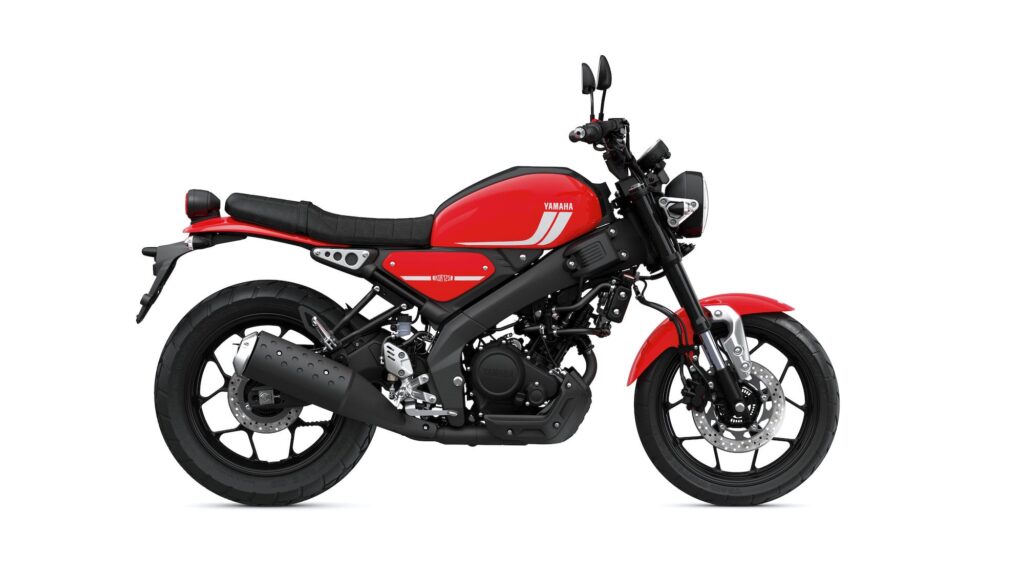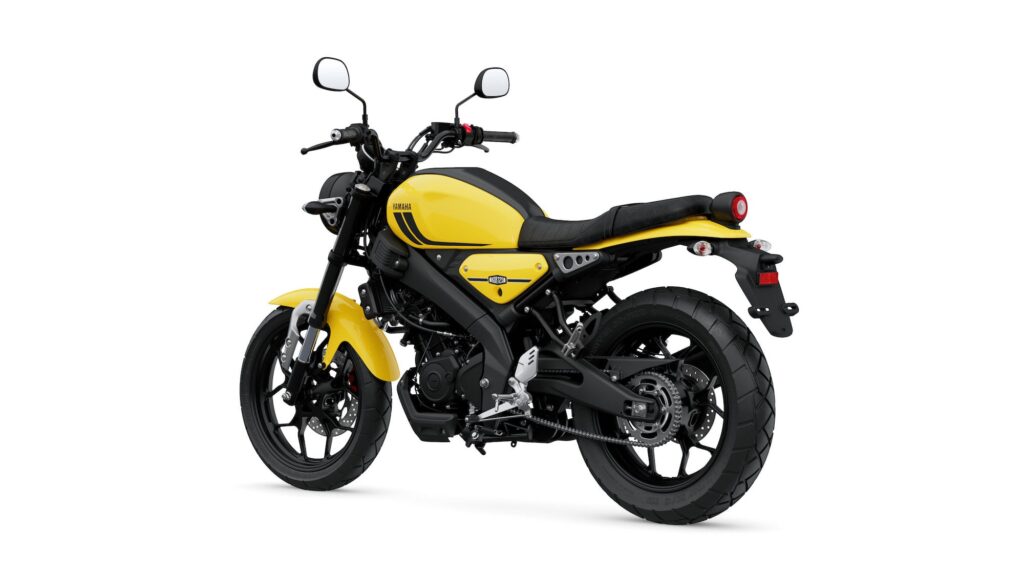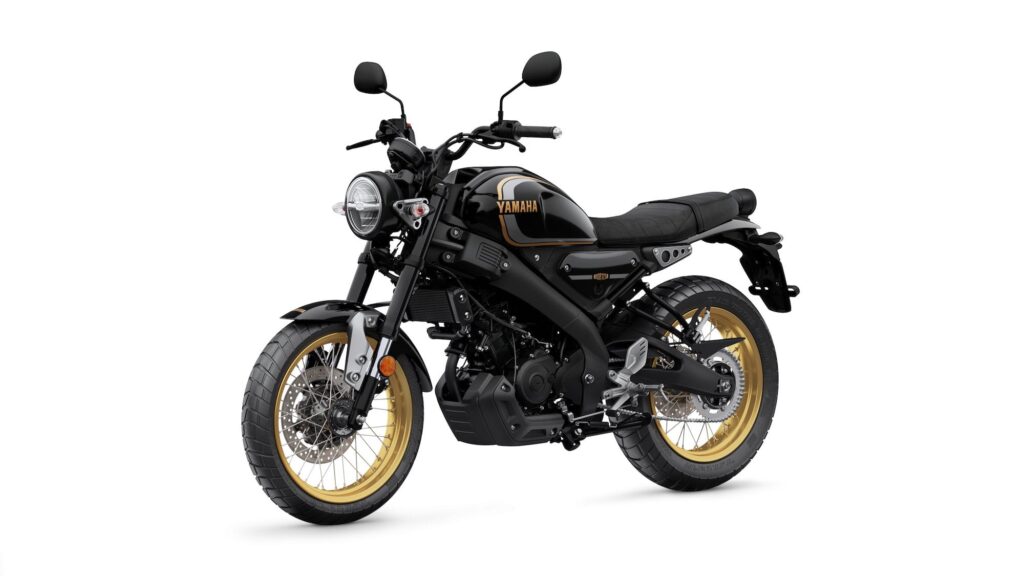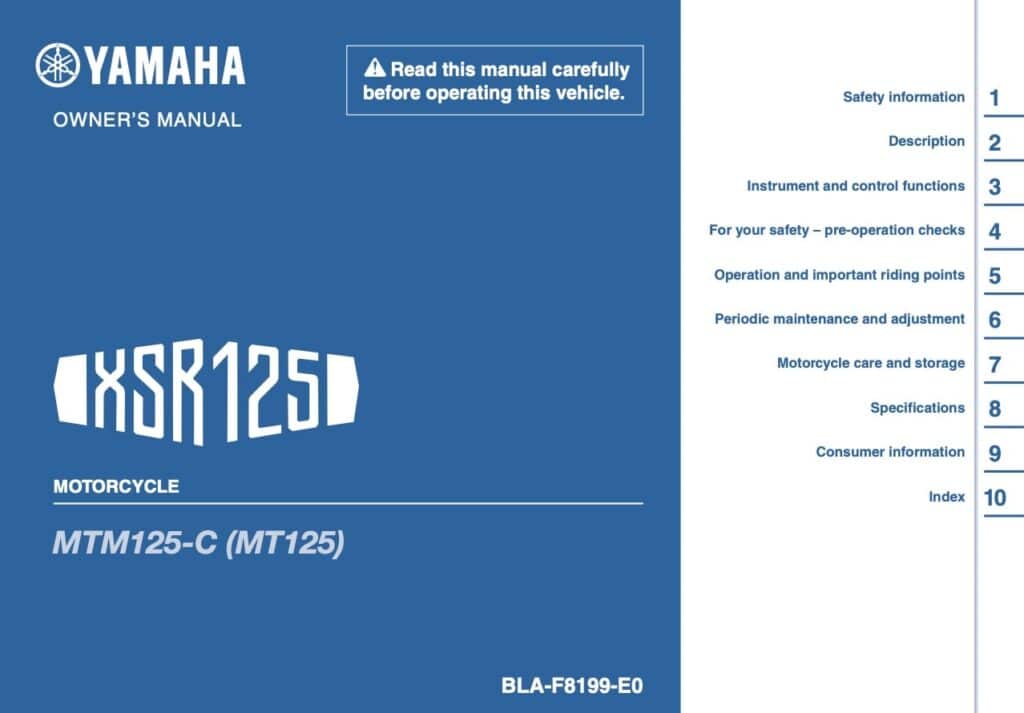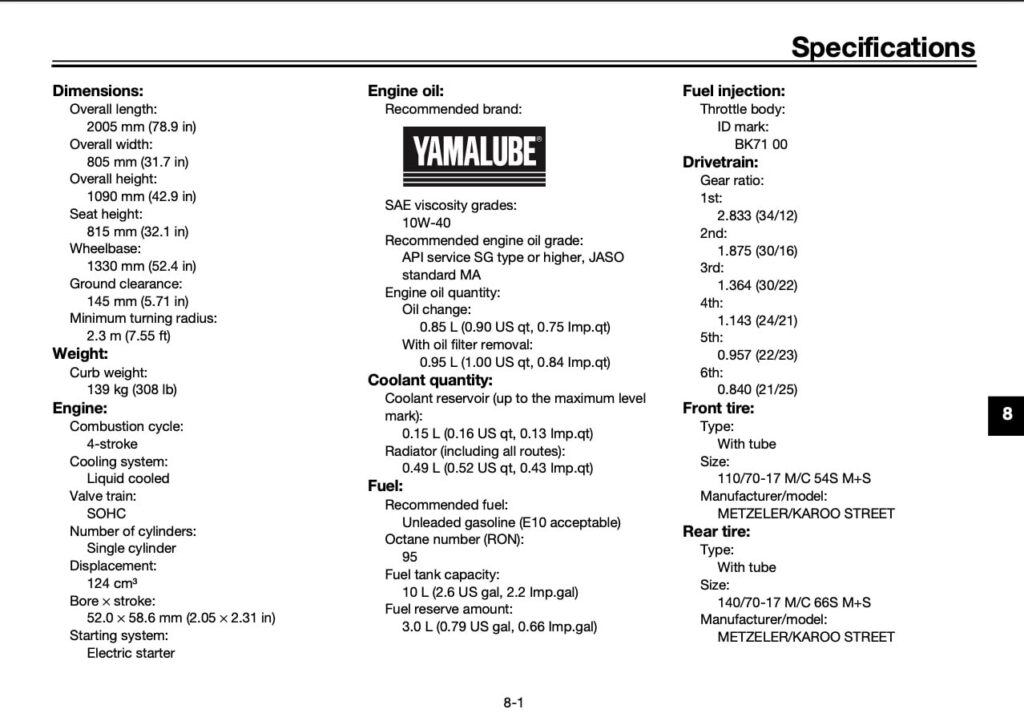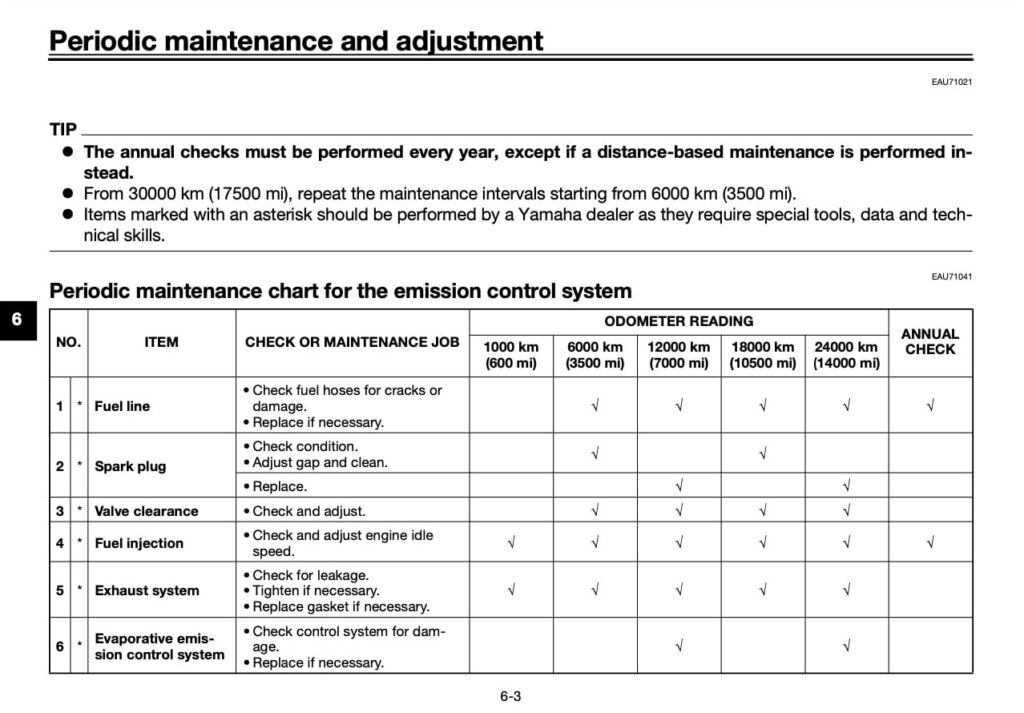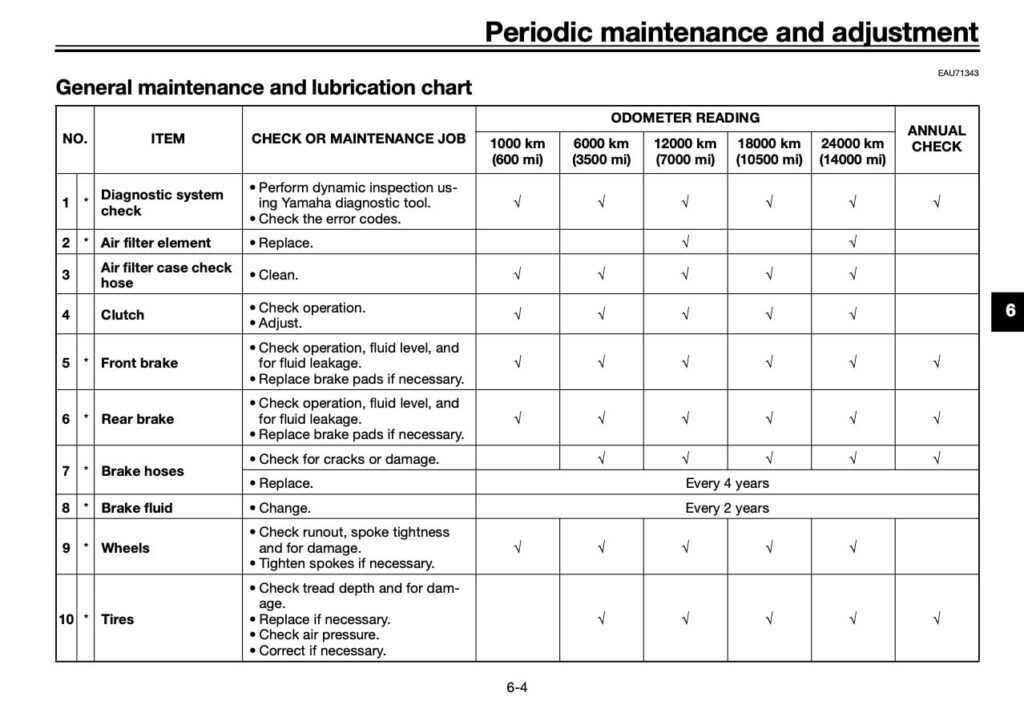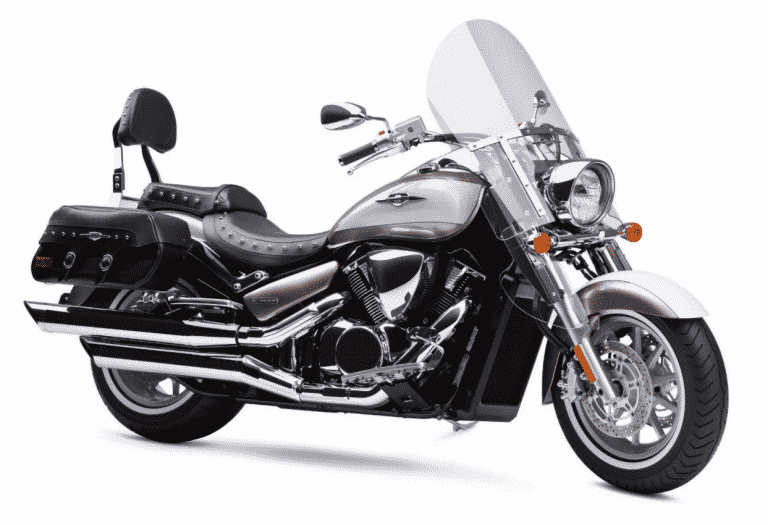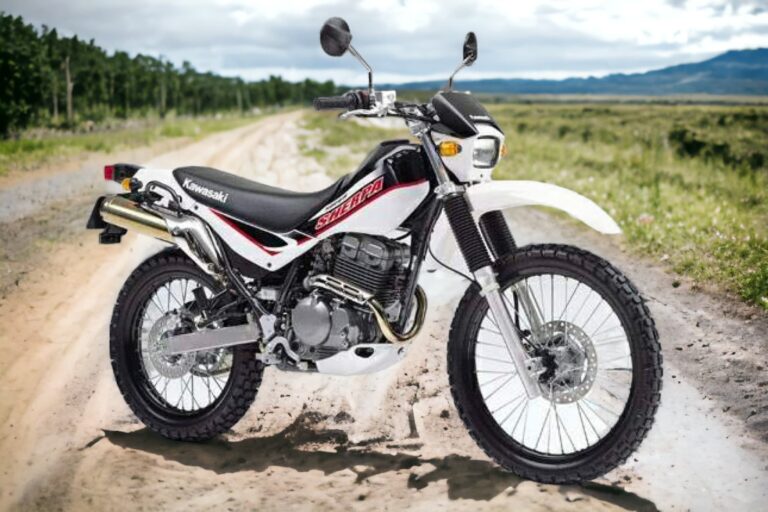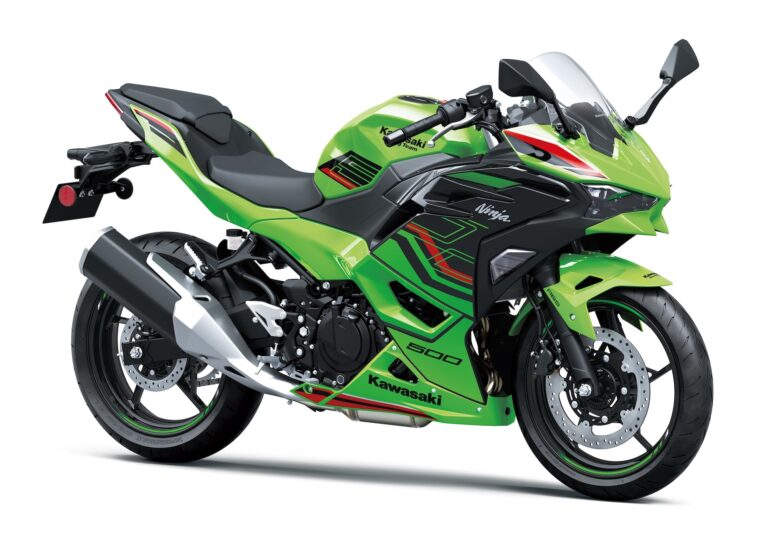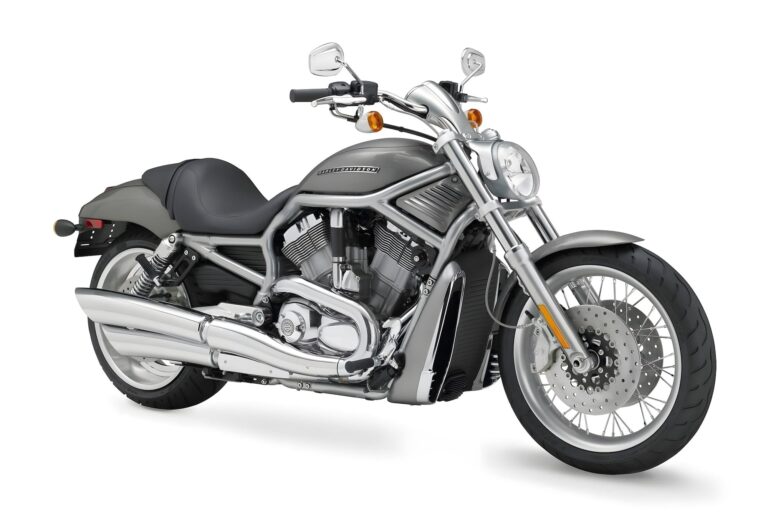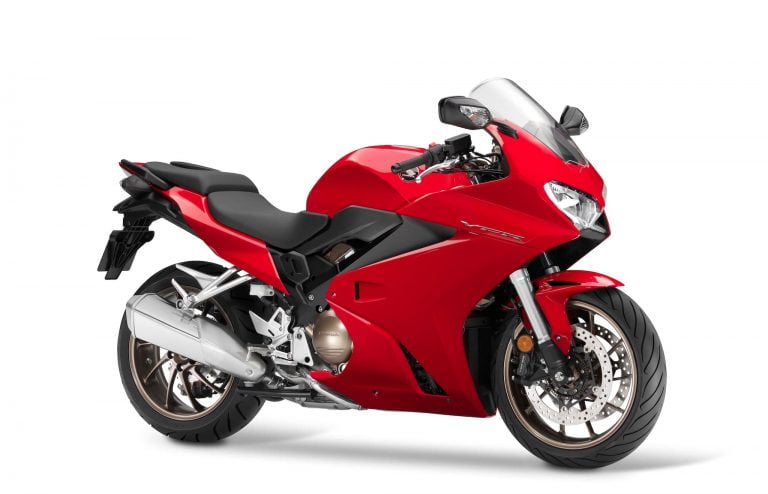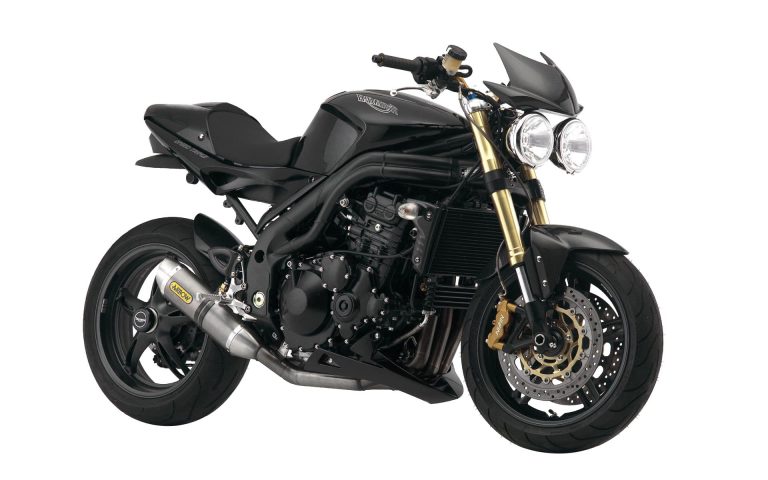Yamaha XSR125 (2021+) Simplified Maintenance Schedule
This is the maintenance schedule for the Yamaha XSR125, the smallest in the Yamaha XSR line. It’s the smallest in the XSR line, the next one up being the mid-capacity Yamaha XSR700.
But the XSR shares much of its innards with the YZF-R125 sport bike and MT-125 naked bike.
The Yamaha XSR125 is based on a 124 cc single-cylinder engine with a single overhead camshaft. It’s liquid-cooled and fuel-injected for low maintenance.
At peak, the XSR125 makes a feisty 11 kW / 15 hp at 10000 rpm, with peak torque of 11.5 Nm (9 ft-lb) at 8000 rpm.
Final drive is via a chain and 6-speed transmission.
This site has links from which we earn a commission (which unfortunately nobody can save, not even us). If you appreciate this research work, then please use those links. Thanks.
Yamaha XSR125 Service Intervals
Replace the oil fo the Yamaha XSR125 every 1800 miles / 3000 km, or between intervals. Otherwise, the Yamaha XSR125 has general service intervals of 3500 miles / 6000 km, at which point you should do a full inspection, change the oil filter, and check the spark plug.
Inspect and adjust the valve clearance at every 3500 mi / 6000 km service.
Maintenance Schedule for the Yamaha XSR125
Below is the maintenance schedule for the Yamaha XSR125.
It’s broken into two sections:
- Major periodic maintenance items
- The standard inspection checklist
Major periodic maintenance
| km x 1000 | 6 | 12 | 18 | 24 | |
|---|---|---|---|---|---|
| mi x 1000 | 3.5 | 7 | 10.5 | 14 | Every |
| Perform full inspection checklist (see below) | ✓ | ✓ | ✓ | ✓ | Year |
| Engine oil — Change (Yamalube 10W-40) | ✓ | ✓ | ✓ | ✓ | 3000 km / 1800 mi (between services), and year |
| Engine oil filter – change | ✓ | ✓ | ✓ | ✓ | Year |
| Spark plug – check, adjust gap and clean. | ✓ | ✓ | |||
| Spark plug – replace | ✓ | ✓ | |||
| Valve clearance – check and adjust | ✓ | ✓ | ✓ | ✓ | |
| Air filter – replace | ✓ | ✓ | |||
| Air filter check hose – clean | ✓ | ✓ | ✓ | ✓ | |
| Clutch – Check operation, adjust | ✓ | ✓ | ✓ | ✓ | |
| Brake fluid – replace | 2 years | ||||
| Brake hoses — Replace | 4 years | ||||
| Coolant — Replace | 3 years | ||||
| Rear suspension relay arm — Lubricate with lithium soap-based grease | ✓ | ✓ | |||
| Swingarm pivot bearings — Lubricate with lithium soap-based grease | ✓ |
Standard inspection checklist
| Part | Check |
|---|---|
| Diagnostic system | Run full diagnostic using the Yamaha diagnostic tool. Check error codes. |
| Fuel lines | Check for cracks and damage. |
| Fuel injection | Check and adjust idle speed |
| Exhaust system | Check for leakage. Tighten if necessary, and replace gasket if necessary. |
| Front brake | Check operation, fluid level, and for leakage. Replace brake pads as necessary. |
| Rear brake | Check operation, fluid level, and for leakage. Replace brake pads as necessary. |
| Brake hoses | Check for cracks or damage. |
| Tires | Check tread depth and for damage. Replace if excessively worn. |
| Chassis fasteners | Make sure all nuts, bolts, and screws are properly tightened. |
| Front fork | Check operation and for oil leakage. Rebuild / replace if necessary |
| Rear suspension relay arm / pivots | Check for smooth operation. |
| Rear shock | Check operation and for oil leakage. Rebuild / replace if necessary |
| Brake lever pivot shaft | Lubricate with silicone grease. |
| Brake pedal pivot shaft | Lubricate with lithium soap-based grease. |
| Clutch lever pivot shaft | Lubricate with lithium soap-based grease. |
| Shift pedal pivot shaft | Lubricate with lithium soap-based grease. |
| Sidestand | Lubricate with molybdenum di-sulfide grease. |
| Sidestand switch | Check operation and replace if necessary. |
| Cooling system | Check coolant level and vehicle for coolant and leakage. |
| Moving parts and cables | Check for ease of movement. Lubricate. |
| Throttle grip housing and cable | Check operation and free play. Adjust as necessary. Lubricate with Protect All Cable Life. Target throttle play: 3-5mm |
| Lights, signals, and switches | Check operation. Adjust headlight beam. |
Maintaining Your Chain on the Yamaha XSR125
It’s important to maintain your chain on the XSR125, as on any chain-driven motorcycle. Use a good-quality chain lubricant like Motul chain paste, or a Motul chain care kit which comes with a couple of handy tools to maintain the chain.
Yamaha recommends you follow the following chain maintenance schedule every 600 mi / 1000 km and after washing the motorcycle, riding in the rain, or riding in wet areas.
| Chain maintenance item |
|---|
| Check drive chain lubrication condition, lubricating if necessary (Motul chain paste) |
| Check drive chain slack, alignment, and condition, adjusting / replacing if necessary |
Tire size / tire pressures
Stock, the XSR125 ships with Metzeler Karoo Street tubed tires.
| Wheel | Tire size | Tire pressure (cold) |
|---|---|---|
| Front | 110/70-17 M/C 54S M+S | 180 kPa / 26 psi |
| Rear | 140-70-17 M/C 66S M+S | 200-225 kPa / 29-33 psi |
About the Yamaha XSR125
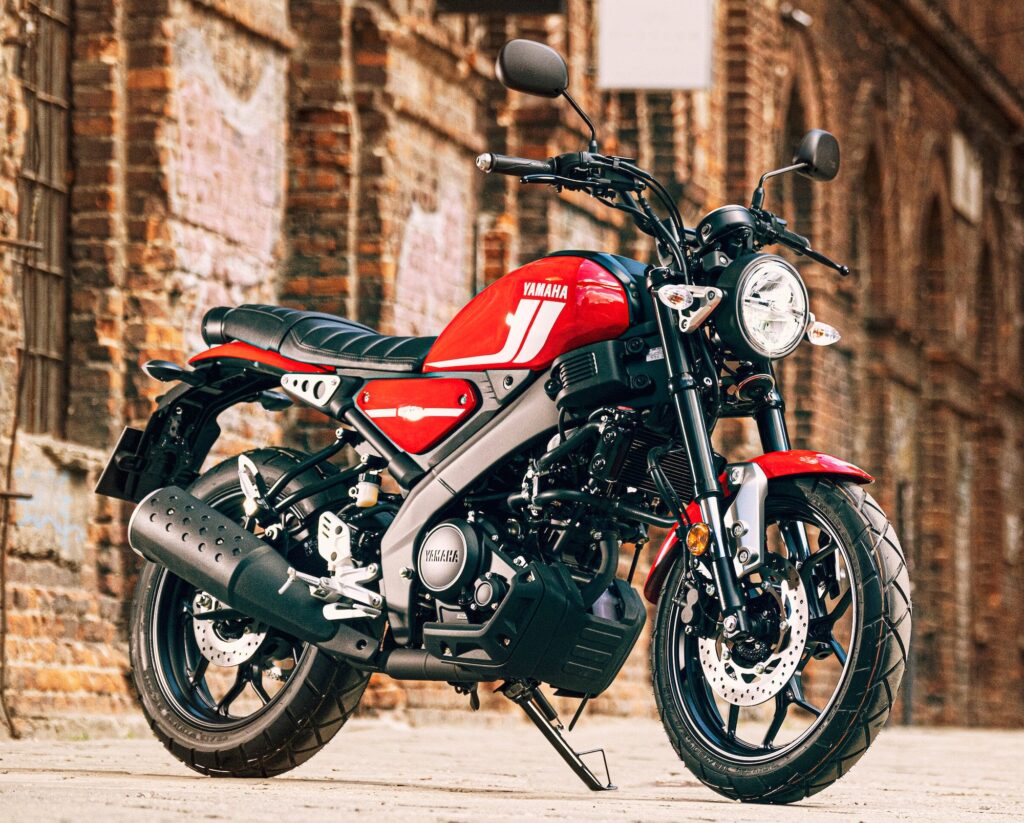
The Yamaha XSR125 is a cool-looking, economical, and super reliable bike from Yamaha.
It has a little 125-cc liquid-cooled fuel-injected engine that puts out 11 kW / 15 hp. But this is plenty to push the diminutive machine just up to freeway speeds — unless the wind is against you, or you’re going up a hill.
The XSR125 is super easy to ride. The engine is unintimidating. And it is surprisingly torquey, thanks to the variable valve timing on the engine, that lets Yamaha tune it for extra midrange.
It’s quite different to other small bike offerings from competitors, like the Honda Grom for example.
The engine in the XSR125 is quite revvy. It has enough torque down low, but also power up high, thanks to the variable valve actuation, which shifts valve timing at 7400 rpm (as long as other conditions are met). It’ll rev to over 10000 rpm and is quite happy to do so.
Most of the ride equipment on the Yamaha XSR125 is quite simple. The brakes up front are provided by a single 267 mm disc on which you have to squeeze quite a bit to get the same feedback you’d get on other bikes. And the front 37 mm forks are non-adjustable, but what were you expecting? They do the job fine, anyway.
The XSR125 does come with ABS standard, as is required these days.
The single gauge gives you speed, tachometer, and even a gear position sensor and fuel level indicator, some of which are luxury items on much more expensive bikes.
The best part is that you get a bike that feels basically “full size” with great style, a reasonable price, and it only weighs 140 kg with a full tank of petrol — which with consumption of around 2L per 100 km in normal riding will just take you over 300 miles or 500 km on a full tank.
Reference — Manual for the Yamaha XSR125
The above came from the manual from the Yamaha XSR125 as well as from other online references.
See some screenshots from the manual below. You can download it from Yamaha Europe here.
